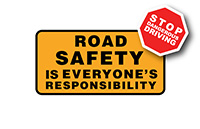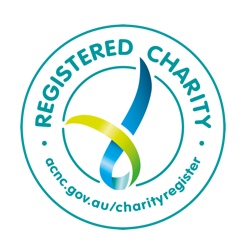Road Rules

Safe Riding - Share the Road
Bicycles are classified as a vehicle and riders must obey the same Road Rules as drivers of motor vehicles. If charged with an offence, you may incur demerit points even if you do not hold a Driver's Licence for a motor vehicle. When riding on a road, you must keep as reasonably practical to the left-hand side except:
- when making a right turn
- when overtaking
- where the road is divided into lanes
Riding abreast
You may ride beside another bicycle rider on a road but must not ride more than 1.5 metres apart. Three or more bicycle riders must not ride beside each other, although you are permitted to overtake other bicycle riders that are riding beside each other. You must not ride outside a bicycle lane abreast of another rider in a bicycle lane unless you are overtaking. When riding in a group you are only allowed two abreast, with a maximum of 1.5 metres between each bicycle. On busy roads, ride single file to avoid obstructing other road users
Giving turn and stop signals
You must give a hand signal when preparing to turn right, diverge right or when changing lanes to the right. However, when undertaking a hook turn, you do not need to give a hand signal. Left turn and Stop signals are not covered in law, but are advisable for added safety, so as to indicate to other road users what manoeuvre you intend to make.
Towing and crossing roads
Towing a skateboarder or person on skates by a bike rider is also illegal. A bicycle rider must not ride across a pedestrian crossing to cross the road from one side to the other. You must walk with your bicycle across the road. This rule does not apply to those bicycle riders who have an exemption to ride across pedestrian crossings, provided they carry a letter issued by their doctor.

Bicycle Lanes
Bicycle lanes are for the exclusive use of bicycle riders. These lanes are indicated by bicycle lane signs or by road markings comprising both a white bicycle symbol and the word 'lane' painted in white. The lanes operate during the times indicated. If no times are stated, they operate at all times Green bicycle lanes are installed at intersections where there is a higher potential for conflict between motor vehicles and bicycles. They clearly highlight the boundaries of a bicycle lane. If you are riding on a road with a bicycle lane, you must, if practicable, ride in the bicycle lane. You may move out of the bicycle lane to avoid debris, potholes, or to safely overtake another bicycle rider. You must only ride in the correct direction in the bicycle lane. During the bicycle lane operating times, you must not ride outside a bicycle lane abreast of another rider unless you are overtaking. Other road users are permitted to use a bicycle lane only when:
- the bicycle lane is not in operation
- stopping in an emergency
- entering or leaving the road from private property
- a parking area, including a parking lane, or another road (and then only for up to 50 metres)
- overtaking a vehicle turning right or making a U-Turn (and then only for up to 50 metres)
- avoiding an obstruction (and then only for up to 50 metres)
- driving a bus or taxi picking up or dropping off passengerfs (and then only for up to 50 metres)
Carrying Passengers or Other Goods
You are not allowed to carry a passenger sitting on the handlebars or cross bar in front of the rider. They are not allowed to sit on the seat, while the rider stands on the pedals all the time. They are not allowed to stand on trick pegs either in front or behind the rider.
Other goods should not be carried by hanging onto them in one hand, or hanging off the handlebars. Put them in a backpack on your back or a proper parcel carrier attached to the bike. This will allow safer handling and balance of the bike.
Riding on the Footpath
Cyclists of all ages are permitted to ride on the footpath unless a 'no bicycles' sign is present. Cyclists must ride on the left hand side of the footpath and give way to pedestrians. They should also give a warning to pedestrians or other path users by sounding their bell or horn or by other means, if necessary for the purpose of averting danger.
Wearing a Helmet
An approved bicycle helmet must be worn (one showing an Australia/New Zealand Standards sticker AS/NZ 2063) whilst riding a bicycle on a road or in a public place. It must be worn in accordance with manufacturer's specifications.
Some simple rules to follow: -
- do not wear any type of hat (especially a baseball cap) underneath the helmet. Fit a visor to the helmet instead
- the front of the helmet should be just above the eyebrows, so that the forehead is covered
- the chin strap has to be done up tight enough so that it keeps the helmet in place (only two fingers should be able to fit between your chin and the chin strap)


